This is part 4 in a series discussing forgotten RPGs (Part 1 can be found here, Part 2 here, and Part 3 here). That is, games most people have never heard of or that didn't last long on store shelves for one reason or another. This batch consists of universal systems for the most part. These games have been sitting on my shelf for years, mostly ebay finds to add to my collection.


1. World Action and Adventure (by Gregory L. Kinney; published by M. S. Kinney Corporation in 1985)

I've seen the occasional mention of this game on the internet, but I don't think people, especially the younger gamers, have heard of it. This hardcover book is printed on very heavy paper stock, making it look thicker than other books of the same page count. Everything inside is black and white, but it is professionally printed. Chapter one contains a pretty good introduction to roleplaying with an explanation of random tables and scenarios. There is a lot of discussion of various types of possible die rolls and their issues. I'd probably be lost here as a newbie. Then there's discussion of maps and scales, with lots of samples. Chapter 4 finally brings us to characters (actors). The first factor is how close the character is to the player, whether morally, physical, totally, or completely different. Characters have 6 traits: strength, health, intelligence, endurance, looks, and dexterity. These are either determined by rolling a d20 (1-3 is a 12) or choosing the relevant score for each that matches the player's self. A rank (2-14) is then looked up for each trait depending on the character's age. There's lots of tables for determining how much you can lift, how many check up rolls you need per year for health and intelligence, movement rates, etc. There's also a history chart for the character's family and occupation/salary charts. Combat is similar to D&D: a to-hit rating is cross-referenced with a protection score to determine what must be rolled on a d20. Lots of options and tables follow. After that, we have random encounters and then miscellaneous charts, lists, and tables. I'd say that it's kind of like GURPS but without all the dis/advantages. I had to go back to look for rules for basic tasks. From what I can gather, it's a d10 roll with 3 difficulty columns. This means that non-combat actions are totally random based on the degree of difficulty. However, there are multiple outcomes. There's another table to randomly answer Yes/No questions. Interesting concepts, but completely relies on the GM's assessments. This game has some interesting concepts and good random tables.

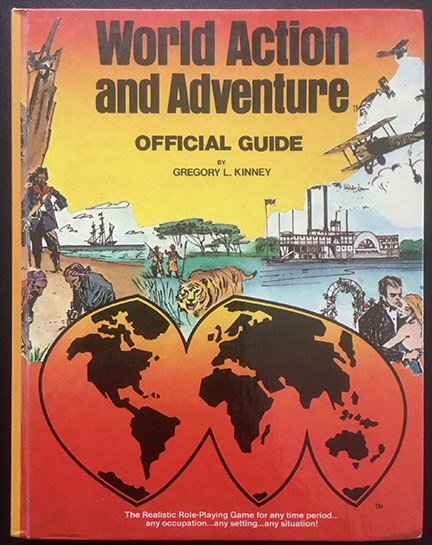


2. Adventure Maximum (by Dennis McDonald; published by WorldMaster Designs in 1992)

First impression of the interior is that this book looks old, like early 80's old due to its use of the Prestige Elite and Cursive fonts (or whatever they are). Page 7 gives up a Master Chart containing failures, critical, and chance of success based on active rank and opposing rank/difficulty. Seems simple enough. There are 10 attributes: intellect, strength, dexterity, condition, speed, willpower, ego, psyche, wealth, and reputation. Make a D% roll for each to get a score between 10 and 40 on a table. There are base abilities (like combat and movement) and resistances (like toughness and magic), all determined by averaging certain attributes. There's also disadvantages, a ton of skills, and special abilities. While the character sheet reminds me of early versions of the Hero System, it's all pretty easy and well-organized. There are some specialty rules like personality profile, but I'm sure you can just ignore that if preferred. Here's an oddity. Skill rank is the 10s digit of the attribute/skill rating, so a 62 would be 6. remember that chart? Use that 6 as the active rank and either the opposing rank or a difficulty (0-15) for the other side. A D% roll determines success as indicated on the chart. Again, pretty easy. I'm not sure what happens with the second digit of the skill rating other than being a stopgap for using experience. Luckily, the rules are nicely unified, so there's not much difference for combat, other than modifiers and some special cases. That covers up to page 88. The rest of the book covers equipment, cybernetics, magic, GM stuff, and notes on adding fantasy races. This feels like a modern system, but in a true retro shell. I would give it a shot if I didn't have a plethora of other systems. Also, the art is sparse, but I like what's there. My question is whether this could take on Hero System? I noticed that a newer version is available; I don't know what the differences are, but the preview suggests that the D% has been replaced with D10 (Link).

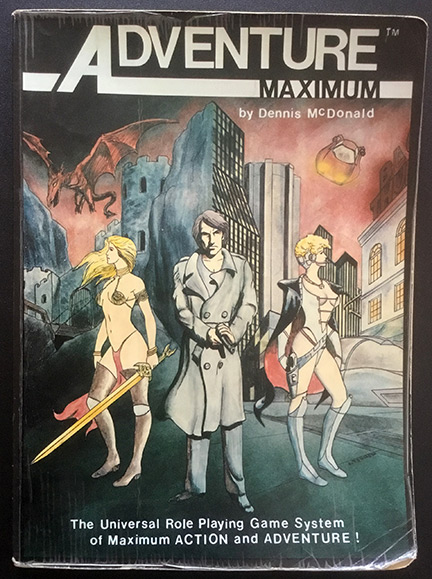


3. Eternal Soldier (by Chris Arnold, Rob Arnold, and Joe Mays; published by Tai-Gear Simulations in 1986)

Not a fan of the cover, but let's see what we've got. The layout is from the early days of computer design, one that is very easy to read. Straight to business. There are 8 statistics (also called attributes in places; rated 3-18): strength, agility, dexterity, constitution, intelligence, will, comeliness, and charisma. That sounds familiar. They even use modifiers from -4 to +4 for these statistics. Attribute rolls or saves are d20 roll under score. Base skill levels depend on the statistic, multiplied by a particular value for each skill involved, totaled, and then divided by 10. Then extra points can be applied. It took me several reads to figure that out. It doesn't help that the chart was tiny. Using a skill means rolling D% under the skill rating. Combat is a skill roll, but there's no defense involved unless some sort of parry or defensive action is taken, which then modifies the damage. I kind of gave up at this point. It very much feels like someone's D&D upgrade. I'm not saying it's a bad system. It's just not for me. There's a few pieces of art, but they don't really add to the book.




4. QAGS (Quick Ass Game System, Second Edition) (by Steve Johnson and Leighton Connor; published by Hex Entertainment in 2003)

This is on the newer side, but I never hear anyone talk about it. This is like the anti-GURPS. It's whimsical and states for mature audiences. I particularly like the "How dice work" diagram. There are basically 3 abilities (rated 6-16): body, brain, and nerve. Then there is a character's job, rated between 6 and 19, followed by gimmicks (unusual traits that are facets of an ability), and weaknesses (the latter two starting at a rating of 10). We also get skills, which are essentially bonuses. Simple rolls are d20 roll under ability and weakness rolls are d20 under weakness. Combat isn't much different. The system itself is very simple, but the book also offers GM advice and some thoughts on running specific genres. The beauty of the game is that it is well-supported with a number of setting books. If you don't mind simplicity and cheekiness, check out Hex Games.

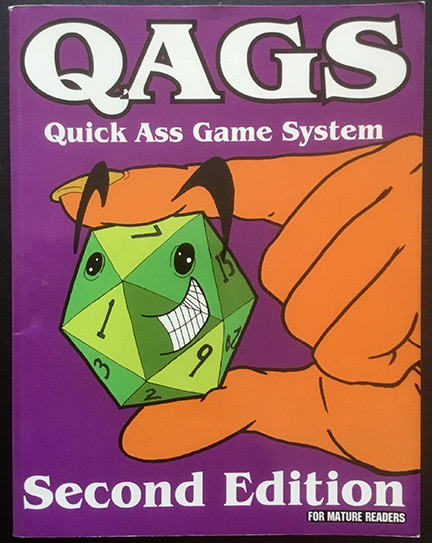


5. Persona (by Kevin Muņoz; published by Tesarta Industries in 1996)

This is a universal Diceless system, though it doesn't feel like one. When I designed Active Exploits Diceless, I wanted it to feel like a traditional RPG rather than how Lords of Olympus and Amber somewhat rely on fiat and simple comparisons (yes, I know there is more to them than that). Nothing wrong with either way, but they are different mechanisms. Persona takes my concept of being like a traditional RPG even further, as there are a lot of numbers involved. Characters consist of 4 foci: physical, emotional, mental, and spiritual. Each focus has the same 4 related attributes: frame, endurance, reaction time, and dexterity. Each focus also has one unique attribute: combat for physical, phobia for mental, technology for emotional, and detection for spiritual. Foci are rated on a scale from 1 to 20, but that scale can be relative. There are also skills linked to particular foci. The gist of the system is that you apply all modifiers, a focus, and possible skills to compare values to see who wins. That's pretty standard for a diceless game. I've never played it, as I discovered it after creating Active Exploits, but it seems solid. There's a good amount of options, like broken weapons and mass combat. I'm not sure you'll be able to find a copy, but it may be a good fit for someone interested in another take on diceless gaming.

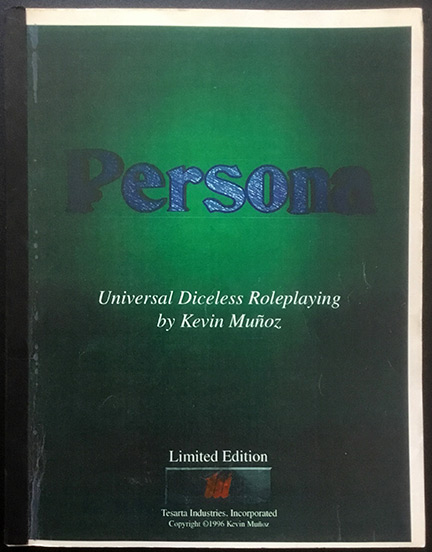


6. So You Wanna Be a Rock 'N' Roll Star! (by William A. Barton; published by Bill Barton Games in 1988/1990)

I saved this one for last. It's not technically a universal system, but why not use it that way? It's about becoming a rock n' roll star, but what is involved in that goal? There are 10 attributes (rated 3-18): strength, dexterity, constitution, intelligence, perception, charisma, luck, drive, talent, and originality. There are other random factors, like hair color, appearance, prior professions, and education. There's some quirks and special abilities (yes, there's ESP powers). Probably of special importance is the instruments you can play, how well you sing, and writing ability (based on your talent score). Next, we have skills -- there are three levels: amateur (+1), professional (+2), and expert (+4). More info covers bands and what goes into them. Skill rolls are 3d6 roll under the attributes/skill level, adding more dice for harder tasks. When it comes to rumbles, there's an action chart that reminds me of Hero System. Combat is essentially the same as skill rolls, but defenses can increase the number of dice rolled. Next, we're hit with setting material, sample scenarios, etc. This feels like Scooby Doo or Josie and the Pussycats sans the mystery elements. The art matches that sentiment. I like it, but I don't think there's anything here I couldn't do with any other system. High Strung does a similar job, but in fewer pages and with more emphasis on being successful as a band.

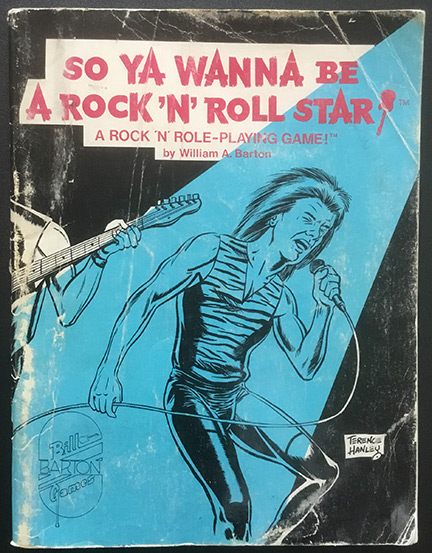


And we're at the end of another batch. Perhaps the next set will be weird and wild, back to fantasy, or a mix of the two. We'll see.


Part 5... |







